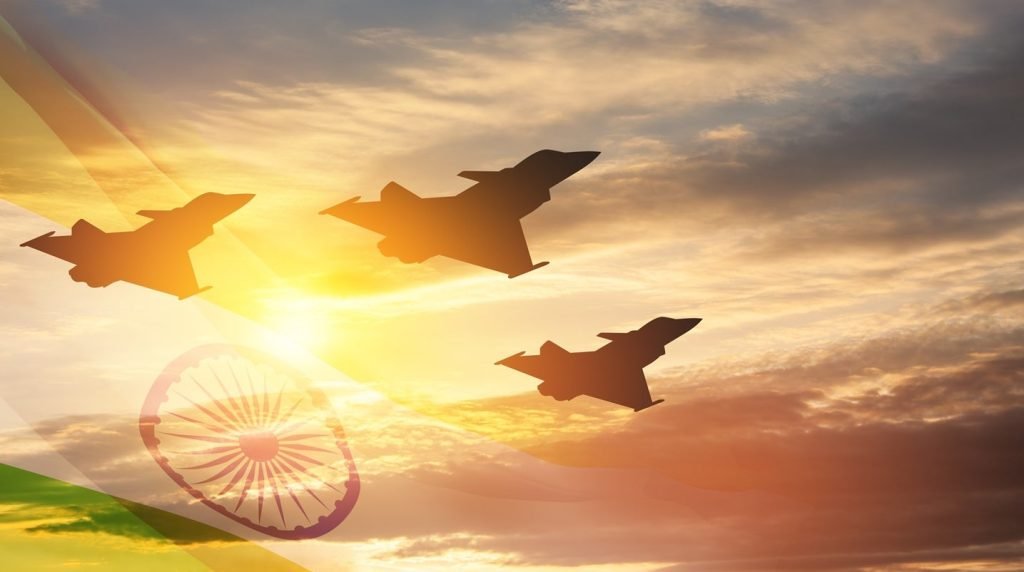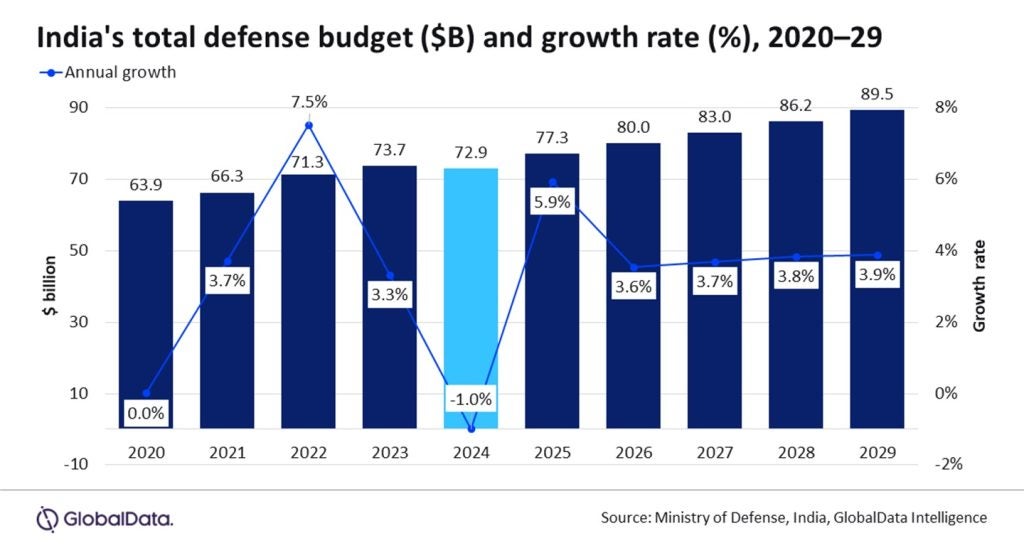
India is set to increase its defence budget in the coming years, with projected spending reaching $415.9bn between 2025 and 2029 to sustain readiness, according to data and analytics company GlobalData.
This increase reflects a compound annual growth rate (CAGR) of 3.7%. The expansion is part of India’s strategic plan to maintain readiness against potential conflicts and enhance its global and regional ‘military stature’.
According to GlobalData’s report, titled “India Defense Market Size, Trends, Budget Allocation, Regulations, Acquisitions, Competitive Landscape and Forecast to 2029”, the country’s defence acquisition spending amounted to $93.6bn over the period from 2020 to 2024.

The country’s push to modernise its military while reducing reliance on imports has spurred growth within its domestic defence sector, prompting substantial investment in research and development.
Globaldata’s forecast suggests that India would allocate approximately $93.5bn between 2024 and 2029 for the procurement of indigenous military platforms.
Amidst concerns over the growing presence of China’s People’s Liberation Army Navy (PLAN) in the Indian Ocean Region, India is also prioritising the expansion of its naval defence capabilities.
Access the most comprehensive Company Profiles
on the market, powered by GlobalData. Save hours of research. Gain competitive edge.

Company Profile – free
sample
Your download email will arrive shortly
We are confident about the
unique
quality of our Company Profiles. However, we want you to make the most
beneficial
decision for your business, so we offer a free sample that you can download by
submitting the below form
By GlobalData
GlobalData aerospace & defence analyst Akash Pratim Debbarma said: “The increase in India’s acquisition budget is largely attributed to the procurement of both indigenous and imported military platforms such as Nuclear-Powered Attack Submarines, Nilgiri-class frigates, Rafale multirole aircraft, Tejas Mark 1A multirole aircraft, Prachand Helicopters and Zorawar main battle tanks among many others.
“India’s strong economic growth over the last decade has also contributed in driving the country’s spending capacity in defence.”
Recently, India allocated funds for the construction of six nuclear-powered attack submarines (SSNs), reinforcing its efforts to protect territorial waters from undersea threats.
Additionally, the new SSNs will help safeguard India’s fleet of nuclear-powered ballistic missile submarines (SSBNs), ensuring the continuity of the country’s nuclear deterrent and countering China’s presence in the Indo-Pacific region.
Debbarma added: “Ahead of the 16th BRICS summit in October 2024, India and China reached an agreement on patrolling rights and initiated border disengagement, viewed as a constructive step toward normalising relations between the two Asian powers.
“However, skepticism towards China especially after the deadly skirmishes of Galwan Valley in May 2020, will compel India to maintain the preparedness levels of its armed services, which in turn will drive the country’s defence budget over the next decade.”









